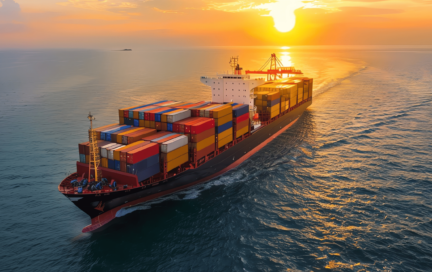A Complete Freight Expense Guide
Shipping costs are one of the most misunderstood or miscommunicated terms in shipping and freight. If not quoted, monitored or controlled properly, it could turn out to be a nightmare for the BCO (Beneficial Cargo Owner also known as Shipper) or Freight Forwarder. This is why we take a look at the various types of shipping and the costs involved with it.
In part 1 of this series, we will take a look at some of the more well-known shipping costs including cartage, wharfage and the bunker adjustment factor. In part 2, we will review some of the lesser-known costs that may sneak up on shippers.
Costs for different types of shipping: Overview
In simple terms, shipping costs are the costs for the movement of cargo from Point A to Point B. Depending on the type of contract, multiple components may be covered in the shipping costs.
In its broadest form to cover a door to door movement, shipping costs can be divided into ocean costs and landside costs both having its own individual components.
Ocean costs have many components but the main costs are Ocean Freight; Bunker Adjustment Factor (BAF); ISPS; Emergency Risk Surcharge; Destination Arbitrary; Low Sulphur Surcharge; Peak Season Surcharge; Currency Adjustment Factor and more.
Landside costs may be further split into port, road, rail, documentation, customs etc each of these categories having their own costs such as Terminal Handling, Wharfage, Cartage, Chassis Usage, Tri-axle, Railage, Documentation Fee, Delivery Order Fee, Customs brokerage fee etc.
Explanation of costs
Ocean Costs
Ocean Freight costs cover the cost of movement of the cargo while it is on the water. Freight costs are charged per container whether 20’ or 40’ and the cost is calculated from loading at a port till discharging at the other. Each carrier or shipping line charges their own freight for the same route and these costs are depending on the operating costs of the carrier such as ship operation, container costs, operating costs and more.
Bunker Adjustment Factor (BAF) relates to the cost of the bunker or in other words, the fuel for the ships. Various shipping lines use various methods of calculating the BAF which in the past used to be a percentage value of the freight, but in recent times is being charged on a per 20’ or 40’ basis. Depending on the oil price the BAF fluctuates.
ISPS is the abbreviation for International Ship and Port Facility Security Code (ISPS) and this is charged by the shipping line for the monitoring and protection of the ports and harbors post 9/11.
Low Sulphur Surcharge also relates to bunker but as part of the green initiative and to reduce carbon emissions, a lot of the ships use fuel which has low Sulphur content which is more expensive than the normal bunker fuel and therefore this charge is implemented.
Currency Adjustment Factor (CAF) relates to the cost charged by the shipping line to cover against the exchange losses they may experience when converting costs and revenues from various currencies into US Dollar which is the main trading currency globally. For example, freight maybe quoted in EUR but the shipping lines costs are in USD.
Landside Costs
Terminal Handling Charge (THC) is charged by both the load port and discharge port and that is charged by the port for loading and discharging the cargo from the ship. The shipping line or their agent, in turn, will bill these charges to the shipper/consignee.
Wharfage is also a port charge which is levied by the port directly to the cargo interest for the usage of their facilities and space.
Cartage is the charge for the movement of cargo by road say from the port to the consignee’s warehouse or vice versa.
Chassis Usage Surcharge is the surcharge charged by the line for the usage of the chassis for the above-mentioned cartage and as part of this movement and depending on the weight of the cargo, a tri-axle surcharge (for weights exceeding the road limits) maybe charged
Who charges and who pays
Generally, the ocean cost component is charged by the carrier (including NVOCC) and/or their agent to the BCO or the Freight Forwarder. The landside charges are charged by various entities such as the port (THC, Wharfage), haulier (cartage), customs agent (clearing charges, duty)
Who pays for these charges depend entirely on the terms of the shipment agreed between the buyer and seller. Majority of the buyers and sellers use the Incoterms or International Commercial terms which are a series of pre-defined commercial terms published by the International Chamber of Commerce to decide on what each other’s responsibilities and liabilities are in terms of this trade.
Conclusion
Sounds complicated huh? While there are various factors and components that govern the application and charging of shipping freight costs, it needs not be complicated if both the buyer and seller understand these costs and when it is applicable and who needs to be paid.
Frequently asked questions about types of Shipping Costs
-
Shipping costs typically include freight charges, fuel surcharges, customs duties, port and terminal handling fees, documentation fees, and insurance. The exact mix depends on the chosen transport mode and Incoterms.






